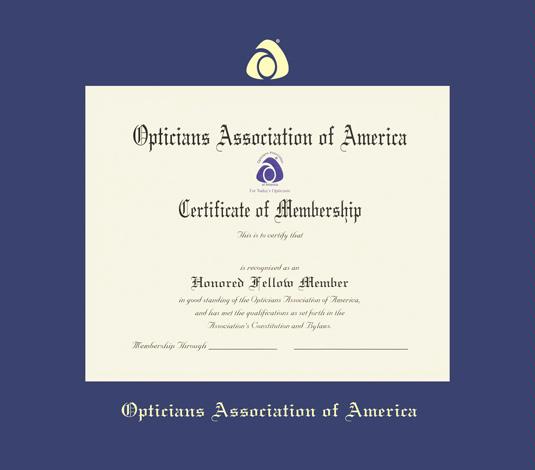What is an Optician?
As an Optician, you will work closely with optometrists and ophthalmologists to ensure that every patient is satisfied with their glasses.
Since you don’t need a medical degree to work as an Optician, you won’t be doing any examining or treating patients.
That doesn’t mean the role of an Optician isn’t important, though.
These lovely people are responsible for helping patients find the right fit, showing them how to take care of their lenses, and taking measurements of patients’ eyes.
Duties
An Optician works with customers and patients to make sure that they purchase the right type of eyeglass for their needs.
There are many responsibilities of an Optician, including:
- Obtaining patient prescriptions
- Taking customer information and measurements
- Adjusting and fitting frames
- Preparing work orders for Optometrist or Ophthalmologist
- Keeping inventory
- Performing administrative duties
Salary
The average salary for an Optician in the United States comes to around $40,000 a year.
For Opticians who have just finished school or haven’t had much experience in the field, the salary is more likely going to be around $25,000 a year.
After gaining several years of experience, certifications, and continuing education, it’s possible to earn as much as $60,000 a year as an Optician.
Opticians who work in Washington DC make more money than Opticians who work in Indiana.
This is due to the socio-economic status of the population in the state, as well as the age of the population.
Annually National Average Salary: $47,560
Average Annual Salary by State
| State | Avg. Annual Salary |
|---|---|
| Alabama | $32,870 |
| Alaska | $53,880 |
| Arizona | $46,770 |
| Arkansas | $44,910 |
| California | $59,960 |
| Colorado | $46,020 |
| Connecticut | $64,220 |
| Delaware | $38,840 |
| District of Columbia | $58,550 |
| Florida | $52,160 |
| Georgia | $45,410 |
| Hawaii | $52,710 |
| Idaho | $40,340 |
| Illinois | $41,240 |
| Indiana | $38,120 |
| Iowa | $40,610 |
| Kansas | $37,980 |
| Kentucky | $43,960 |
| Louisiana | $36,870 |
| Maine | $46,420 |
| Maryland | $44,770 |
| Massachusetts | $66,330 |
| Michigan | $42,710 |
| Minnesota | $44,810 |
| Mississippi | $32,780 |
| Missouri | $38,510 |
| Montana | $44,380 |
| Nebraska | $39,340 |
| Nevada | $52,900 |
| New Hampshire | $48,610 |
| New Jersey | $61,350 |
| New Mexico | $38,750 |
| New York | $59,680 |
| North Carolina | $51,870 |
| North Dakota | $42,000 |
| Ohio | $46,600 |
| Oklahoma | $34,820 |
| Oregon | $50,440 |
| Pennsylvania | $42,060 |
| Rhode Island | $48,740 |
| South Carolina | $48,390 |
| South Dakota | $39,690 |
| Tennessee | $46,270 |
| Texas | $37,890 |
| Utah | $42,820 |
| Vermont | $56,430 |
| Virginia | $55,030 |
| Washington | $51,400 |
| West Virginia | $37,810 |
| Wisconsin | $42,390 |
| Wyoming | $38,480 |
| Puerto Rico | $26,800 |
Annual Average Salary: Top 5 States
The top earning state in the field is Massachusetts, where the average salary is $66,330.
These are the top 5 earning states in the field:
Conducted by: Bureau of Labor Statistics, Department of Labor.
* Employment conditions in your area may vary.
How to Become an Optician
Step 1Earn a Degree
Every Optometry office will require at least a High School diploma in order to work as an Optician, however many are requiring that Opticians obtain an Associate’s degree in order to gain employment.
Whether you earn an Associate’s degree or you attend an Optician program, you will have a classroom, laboratory, and practical training.
Some of the classes you can expect through an Optician program include:
- Optics Principles
- Ocular Anatomy
- Lab Procedures
- Contact Lenses
- Ophthalmic Dispensing
- Ophthalmic Materials
Most Associates degrees take around two years to complete, however, some Optician programs can take as little as a year.
It’s important to develop hands-on experience while in school so that you have knowledge of how to work with customers before you gain employment.
Step 2Complete an Internship/Apprenticeship
The thing about becoming an Optician is that you will need to have a lot of experience before you begin your career.
This is because the eyes are a very delicate and intricate part of the body, it’s important to be precise in this job, and having years of experience will help.
While working an internship, sometimes called an apprenticeship in Optometry, you will gain experience working with advanced Opticians providing customer care as well as:
- Receive customer prescriptions
- Measure customer eyes and faces, with supervision
- Adjust eyewear
- Repair or replace eyeglass parts
- Educate customers about eyewear
- Perform business tasks
Most internships last around 1 to 2 years, and it is possible to earn this experience while also going to school.
In order to gain licensure, an Optician must have at least 2 years of experience, so this is a great head start.
Step 3Become Licensed
Only about half of the states in the US require that Opticians become licensed, however, it’s important to make sure you are in compliance with your state’s laws.
In order to become licensed, Opticians must have at least 2 years of experience and pass two exams.
Aspiring Opticians who want to become licensed also need to have completed an accredited Optician program or degree within the last two years as well.
You can find out if your program is accredited by visiting the Accreditation Council on Optometric Education website.
The Opticianry Licensing Board in your state will give you the information that you need.
It is possible to take some of the exams online, but again it is important to contact your state licensing board.
Most exams cost around $420 and require that you reapply in 5 years.
Step 4Earn Certifications
Even though earning a certification is completely voluntary, most employers look for Opticians that have credentials.
In some states, gaining licensure can be the same as earning a certification.
This is something that you will need to find out through your local licensing board.
Some states allow Opticians to earn the certification online, while others require in-person testing.
In order to become a Certified Optician, passing both exams is a requirement.
The first exam that is graded to become a Certified Optician is the National Opticianry Competency Exam.
This exam will test your competency in ophthalmic dispensing.
The second exam is the Contact Lens Registry Examination.
This exam is for certification in contact lens dispensing.
Most exams are around 50 questions that have been reviewed by an accredited board.
You can expect to take around an hour and a half to finish each exam.
Education
It used to be that you only needed a High School diploma in order to work as an Optician in the United States.
Nowadays, more and more employers are requiring some type of formal education before they will hire a prospective Optician.
This is because credentials and education are becoming more and more important, especially in this modern world.
Some Opticians choose to earn an Associate’s degree, which can take around two years.
Others decide that they want to enter into an Optician program, which can take as little as one year to complete.
Depending on whether you enter a program through a university or another accredited facility, the courses you take may change, but some of the most common classes are:
- Contact Lens Dispensing
- Computer Applications
- Interpersonal Skills
- Business English
- Optical Principles
- Math for Opticians
- Ophthalmic Dispensing
Many programs allow you to take classes online, but it is important to gain hands-on experience with an internship or apprenticeship.
These are often offered while you are still enrolled in your program and are typically a prerequisite for graduation.
If you are interested in a program that takes about a year to complete, then a certificate program may be right up your alley.
These programs don’t provide a degree at the end, so if/when you want to start college, you will be considered a freshman.
These programs will likely offer the same types of courses as with an Associates degree, but you will also have classes such as:
- Optical Theory
- Eye Physiology
- Lens Technology
- Lab Sessions
The price for these types of programs can vary, some online programs can cost around $1,200 to $2,500 per program.
Keep in mind that it is best to go with a program that offers an internship or an apprenticeship.
This way you will gain knowledge while obtaining your degree or certification and have experience when you finally look for a job.
Video About The Career
Certification and Licensing
Licensing to become an Optician is not required in every state, so please make sure you check out your states local licensing board in order to learn more.
For the states that do need to be licensed, this can be done through the American Board of Opticianry and National Contact Lens Examiners.
In many states, it’s possible to gain licensure and certification by taking both of the exams given by the ABO-NCLE.
One of the exams that you will want to take is the National Opticianry Competency Exam.
This will provide you with certification in spectacle opticianry.
For both exams you will need to have a High School diploma to enroll.
The NOCE is a two-hour competency-based exam that consists of around 125 questions.
Some of the areas in which you will be tested include:
- Ophthalmic optics
- Instrumentation
- Dispensing procedures
- Laws, regulations and standards
- Ocular physiology
The other exam is called the Contact Lens Registry Exam, and it will allow you certification in contact lens opticianry.
This exam is also around 125 questions and will take two hours to complete.
Some of the information that you should study for that may be included on the exam are:
- Lens dispensing
- Patient education
- Follow up visits
- Pre-fit preparation and evaluation
- Administration of lens guidelines
Typically, these exams can be taken one after the other, on specified test days, so that you can become certified in both areas.
In many states, the exams are given in May and November.
The exams can cost around $150 each to apply.
Once you pass the exam, the certification boards will mail the certification diplomas to your home.
These certifications must be renewed every three years.
In order to be eligible for renewal, an Optician must earn between 12 and 21 continued education credits and pay the renewal fee.
Certification Example:

Average Training Program Duration: 2-3 Years
The average training program to become an Optician can vary depending on the type of program you enter.
Some programs can be as little as 8 weeks, but may not provide enough education for the typical Optician.
Other programs can take a year or more to complete, and often have lab work or internships attached.
It’s possible to find some programs online, where you can learn right from home.
Those that work from home should think about doing an internship or apprenticeship in person to gain experience.
An apprenticeship or internship can take anywhere from 6 months to a year.
Popular Programs
Job Outlook
The job outlook for Opticians is pretty positive over the next ten years.
The career is expected to rise by around 7 percent, which is a little higher than many other careers in the same field.
It seems that with the baby boomer generation growing older, more eye exams are needed, which calls for more Opticians.
Opticians will also be needed due to the rise in illnesses like diabetes, and they will also be needed to fill prescriptions.
Opticians who hold an Associate’s degree or higher will find that they have better job prospects than those who don’t have a degree.
Employment Growth Projection: 6%
2020
2030
That's a higher than average projected growth of 4,400 jobs.
Optician: Interest Over Time
Should You Become an Optician?
Overall Satisfaction: High

It seems that Opticians find their careers to be less stressful and chaotic than most other careers in the same field.
Opticians also find that they have better work to home life balance than many other people in the medical field.
There seems to be a lot of upward mobility in this career, as well as flexibility in scheduling.
This career was ranked as one of the best careers to have that don’t require a college degree.
Being a people person and having the desire to make people happy is a great quality to have for an Optician.
Average Salary: High

The average salary for an Optician in the United States is about $40,000 a year.
That is the average for Opticians who have worked in the career for some time, for those just starting out it can be a bit less.
A typical starting pay for an Optician is around $25,000 a year.
After several years of experience, continued education, and even some certifications, it’s possible to make around $60,000 a year as an Optician.
Other factors that can change your salary include the population of your area and the age of that population.
Job Growth Outlook: High

If you are looking to start a career as an Optician in the next ten years, you shouldn’t have to worry about job opportunities.
The rise in this career looks to be around 7 percent within the next decade.
This means that there will be more job openings for future Opticians, and this is more than other careers in the same field.
The aging baby boomer generation requires more eye care, and the increase in diseases like diabetes calls for more Opticians as well.
Education Duration: 2-3 Years

It may take some time to become an Optician.
That is because more and more employers are requiring an Associate’s degree, at least, to work in an optometry office.
An Associate’s degree can take around two years to complete.
You may be able to find a degree program online that takes as little as 18 months.
However, it is important to have an internship or apprenticeship while attending school, this way you’ll have hands-on experience.
Personal Skills Needed

Because Opticians work so closely with patients and customers, it’s important that they have great people skills and love to offer advice about eyewear.
Some of the other qualities that an Optician should have include:
- Good communication skills
- Ability to be precise
- Organizational skills
- Adaptable to new situations
- Interest in the healthcare business
- Ability to ease nervous patients
- Concentration skills
- Ability to work repetitive tasks
Working as an Optician can be a fun and rewarding job that has great opportunities for promotions, especially for those who possess these skills and more.
Frequently Asked Questions
Q. What is an Optician?
An Optician is someone that works in an eye doctor’s office, but they don’t deal with the medical side.
These employees will help patients pick out eyeglasses or contacts, and measure the patients’ eyes in order to see how the glasses or contacts will fit.
They will also do office work and insurance duties in order to make sure that patients are happy and cared for properly.
Q. How long does it take to become an Optician?
Most optometry offices and hospitals require an Optician to have at least a high school diploma.
However, many more are requiring Opticians to earn an Associate’s degree in order to gain employment.
This can take around two years and will provide prospective Opticians with vital information as well as hands-on experience so they don’t start their career blindly.
Q. Is there a demand for Opticians?
It seems that with the growing baby boomer population, more Opticians are required in optometry offices as well as hospitals and even some grocery stores.
This is due to the increase in vision issues in the population, and also the rise in diseases like diabetes.
The career is projected to grow around 7 percent within the next ten years, which is a lot compared to other careers in the same field.
Q. What is the average salary for an Optician?
On average, an Optician can make around $40,000 a year.
When just starting out, a base salary should closer to around $25,000 a year.
After many years of experience, specializations, and certifications, it’s possible for an Optician to earn around $60,000 a year.
Having certifications and specialties will provide many more promotions and raises.
Q. What does it cost to become an Optician?
That depends on the type of program you decide to enter.
Some programs, like those that are privately owned or that can be done online, can cost anywhere from $1,200 to $3,000.
However, these will earn a certificate, not a degree.
Many employers are looking for Opticians with degrees, and an Associate’s degree can cost around $15,000 to complete.









